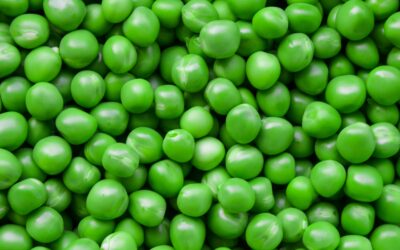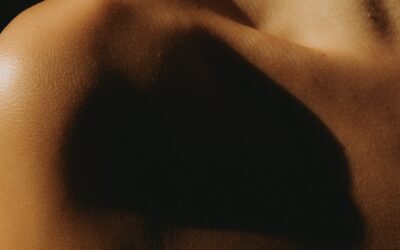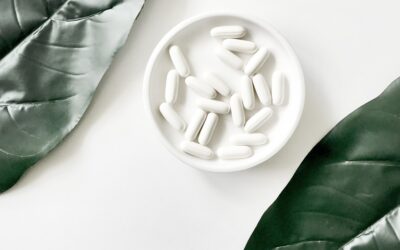We decided to go on a boat tour down toward the Franklin and one of the trip stops was at a fish farm. The fish were in the ocean but in very large round cages and when we arrived they were being fed by giant booms which sprayed, what seemed to be a part liquid part solid mixture.
I had been to a fish farm in Pemberton WA, where the fish were in concrete pools and fed on a schedule. It seemed to me that these ocean caged fish were a better solution. But it wasn’t until recently when I started to read that more then 50% of fish purchased in shops around the world were being reared domestically in a booming industry called “aquaculture.” What really pulled me up short and made me do more research was that there were experiments under way to change the diet of the domestic fish from small wild fish and fish oils to a percentage of vegetable and plant oils and protein derived from a range of non-fish sources such as by-products from land animal processing, micro-algae, plants, zooplankton, insects and bacteria.
This months newsletter is about the fish we eat and how it is reared. Like any animal that is domesticated for human consumption the demand for the food becomes so big that the industry finds ways to increase profits by cutting corners that are not necessarily good for the animal nor for the human consuming the food. I’ll let you make up your own mind, but before I tell all, the solution here is to try and buy fish diewctly from the “wild” as much as possible.
I love fish and my favourite fish are salmon and ocean trout, naively I believed that they were caught in the Atlantic Ocean and Tasmania’s clean ocean and insisted on eating them at least once a week if not any time I went to a restaurant. But as my realisation that 95% of salmon eaten today is from aquaculture and how these fish are farmed became clearer, I’ve decided to consume them less and eat some wild white flesh fish instead or whenever I can get wild salmon. The more I read about commercial animal husbandry the more I’m tending to dramatically decrease meat consumption, but having been a vegetarian for 15 years and now eating meat again I cannot completely give up meat as I feel so much better when I consume it in moderation.
Aquaculture/Fish Farming
Fish farming or aquaculture as it is known is a growing industry and as it grows it demands more from the environment. To ensure the environment is protected, new and improved measures are put into place to ensure the viability and safety of the industry.
While propaganda from many aquaculture institutions tells us how the industry is sustainable and the quality of the fish is second to none the reality of fish farming is becoming clearer.
Less Food
To raise each kilogram of fish in captivity requires anywhere between four and ten kilograms of fish meal and fish oil.
What is Fish Meal and Fish Oil (F&FO)
Fish meal is the brown flour obtained after cooking, pressing, drying and milling fresh raw fish and fish trimmings. It is made from any type of seafood but is generally manufactured from wild caught, small bony/oily marine fish which are usually deemed not suitable for direct human consumption. These fish are often referred to as industrial fish, feed grade fish or trash fish. The latter name implies little value but biologically this is not correct
Historically most of the world’s fishmeal was used to feed domesticated livestock such as pigs and chickens and was also used in the production of pharmaceuticals and fertilisers but with the increase in aquaculture more is being used for aquatic feed rather then terrestrial animal feed.
More Waste
The excreta from some large aquaculture are estimated to equal the sewage from a city of 10,000 people. The waste flows straight into the surrounding waters, fouling nearby habitat, causing disastrous plankton blooms and destroying shellfish beds.
Escaped Fish
Some of the worlds farmed fish escape and compete for habitat with wild fish. Stray Atlantic Salmon have been found as far north as Alaska where salmon farming has been banned. By 1990 it was believed that one third of the salmon populations spawning in Norwegian rivers were escaped farmed salmon. In 1995 it was estimated that 90% of all salmon in New Brunswick’s Magaguadavic River were farmed fish whereas in 1983 this was only about 5.5%. And this trend is increasing.
Overcrowding
Disease can spread rapidly in aquacultures overcrowded conditions, farmed fish receive antibiotics both in their feed and through injections, 30% of that medicated feed is estimated to go uneaten, falling through the nets to enter the sea’s food chain. Infestations of lice have been found not only in farm fish but also wild fish. Infectious salmon anemia (ISA) a viral disease and furunculosis a bacteria disease are found in fish in over crowded conditions and many of these diseases are now antibiotic resistant and spreading to wild fish colonies.
PCB and Other Contaminates Concentrations Increase
A study published in 2004 in the journal; Science found that there was higher concentrations of PCB in aquaculture fish more so then wild fish sometimes up to 10 times the amount. It is thought to be due to the concentration of the fish meal. Wild scallops near salmon farms have been found to test positive to traces of emamectin benzoate, an ingredient found in sea lice pesticide used in aquaculture. Other toxins such as toxic dioxins and furans were also found in greater amounts in farmed fish.
Colourings Added
For me this is the most deceptive of all practices.
In nature, salmon and ocean trout get their pinkish colour by feeding on krill, shrimp and other crustaceans which in turn feed on algae rich in the reddish pigment astaxanthin. Krill and other prey also contain other antioxidants and nutrients good for the health of salmon and humans. Consumers expect the same colour from farmed fish which is why colour additives such as canthaxanthins and astaxanthin derived from petrochemicals are added to the fish meal. Just a side note here; in the case of poultry canthaxanthin is used to give the skin and egg yolks a brighter yellow colour. This is purely for cosmetic reasons in both fish and poultry.
The artificial astaxanthin added to salmon feed differs from the naturally occurring astaxanthin in the diets and flesh of wild salmon in its “optical isomeric distribution.” While this obscure distinction may sound innocent, studies show that fish that consume synthetic astaxanthin in their commercial fishmeal grow more slowly than fish that consume the same amount of astaxanthin from natural feed containing the same amount of calories per gram. This is an indication that it does not function identically in salmon’s bodies—and maybe not in human bodies either.
In 2003 European Union officials reduced the permissible levels of canthaxanthin in fish and poultry feeds from 80 parts per million per kilogram of feed to 25 parts per million because there was some concern that high levels may cause human retinal damage as there is an accumulation of pigments in the retina, affecting the sight.
Changing The Diet of Aquaculture
Due to the increasing need for fish meal (a processed food at that) and the drain on the oceans resources there has been a push in the industry to find an alternative feed source with minimal undesirable side effects; such as slower growth, decreased fish health and nutritional content of the end product. While I was doing my research I noted that the evidence for changing the diet from a fish meal and fish oil content to a plant based and alternative land based protein source was somewhat unnerving. While researches with copious funding (up to $6 million and lots of time on their hand) concluded there was no change in the end product, other smaller based researchers found significant changes in the nutrition of the end product.
Data compiled by the United States Department of Agriculture show that wild fish in particular wild salmon are nutritionally superior to farmed salmon in at least two ways; wild salmon are lower in saturated fat, having only half as much as the typical farmed salmon and wild salmon have a healthier ratio of omega 6 to omega 3 fats. Westerners consume far too many omega 6’s and not enough omega 3’s. A good ratio is 3:1 which is the ratio found in wild salmon whereas farmed salmon consuming an alternative diet from land based food and oil has a ratio that could be as unbalanced as 10:1.
Many aquacultures do a mix of plant and sea based meals some heading towards more vegetable oils and plant based proteins. This is disturbing!
Humans, animals and fish have all evolved to eat certain types of food in order to be healthy and in order to breed. Humans and it seems now animals and fish are all eating foods that are not from their primitive diets, the ramifications are unfolding and it can be seen most dramatically in the human population where sickness and disease is normal, while few people especially in the western world on a western diet have abundant health and energy.
The increase in mercury in fish has been well known to be a problem for certain sectors of the population, such as pregnant women, and now with the knowledge of what farmed fish are like we have to reconsider our fish intake. As I said in the beginning I will continue to eat fish, but with more scrutiny as to its origins. I do not think we need to avoid fish but to eat it as part of our natural diet where it may be consumed once or twice a week and as much as possible in its wild state.
Happy Changing Habits
Cyndi O’Meara
NB: While I was researching this article I tried to call and contact the ocean trout fish farm in Tasmania but on their webpage I could find no phone numbers and my e-mails kept bouncing back, so I was unable to ask them what colours were added to the fish meal as well as what their fish meal was made from.







0 Comments